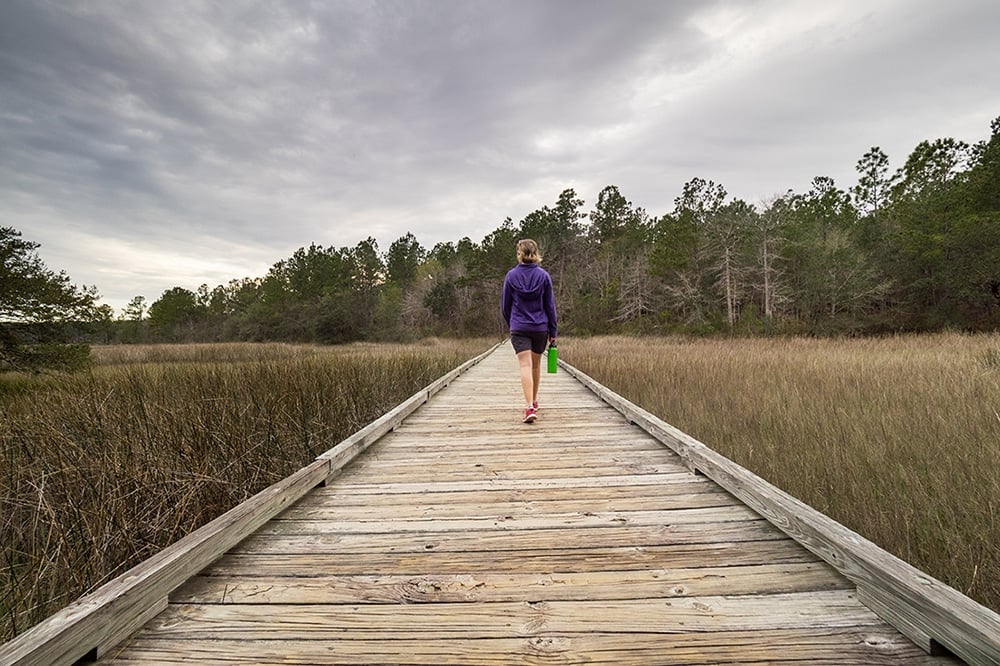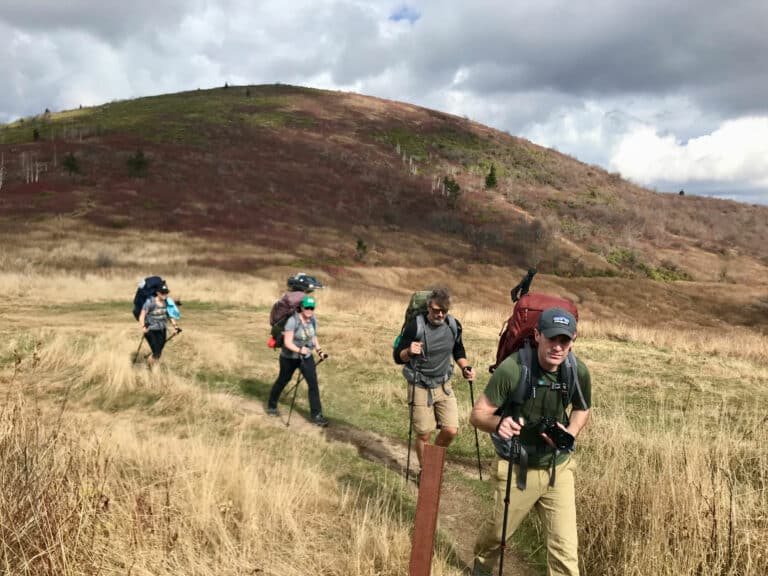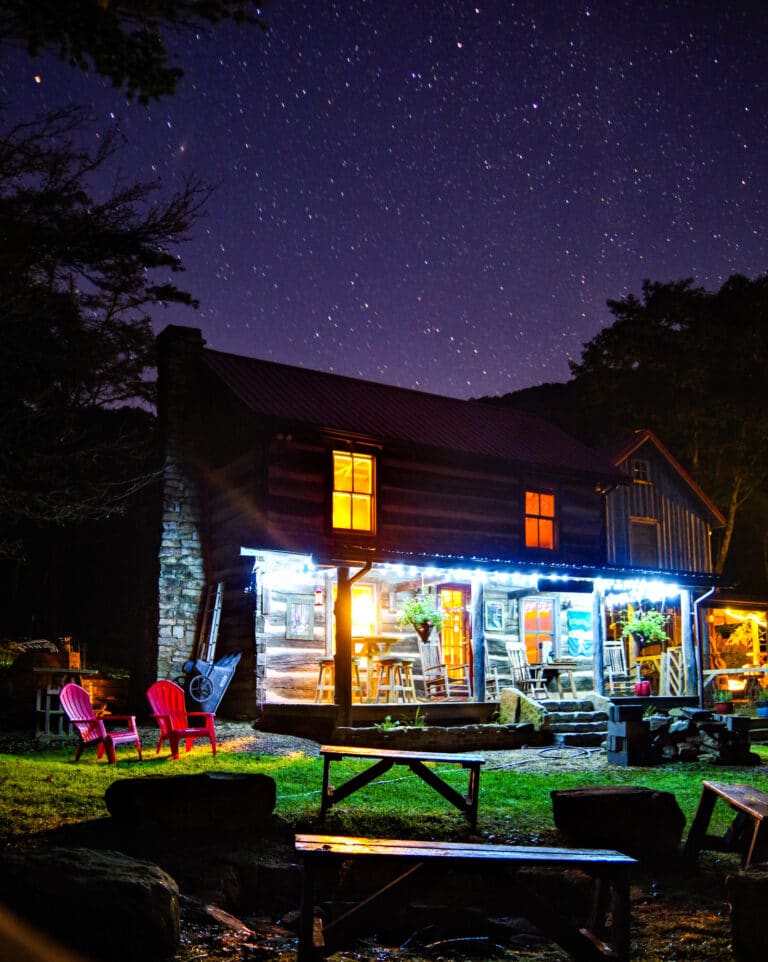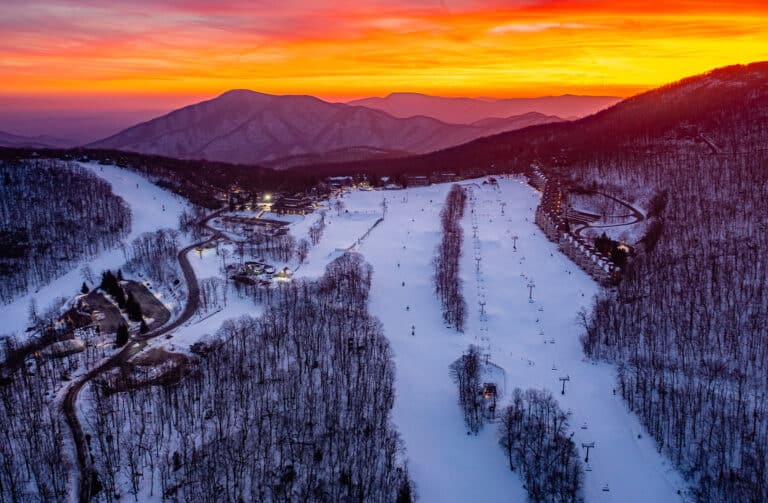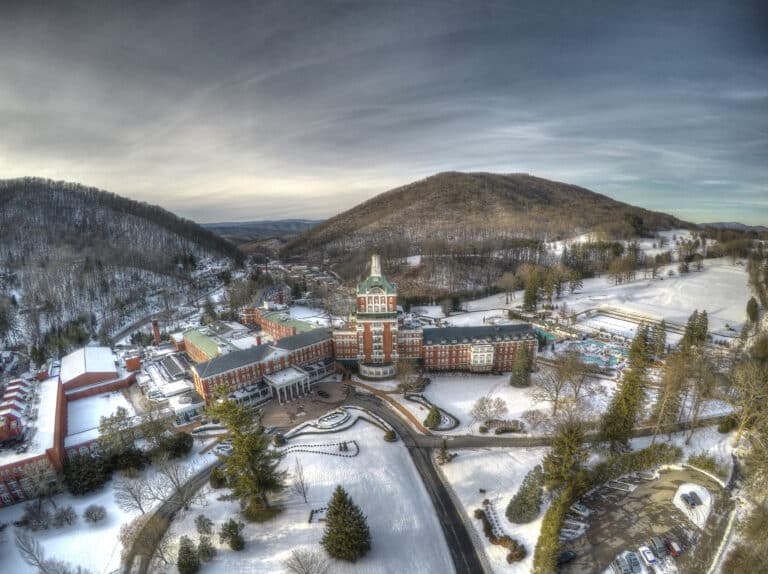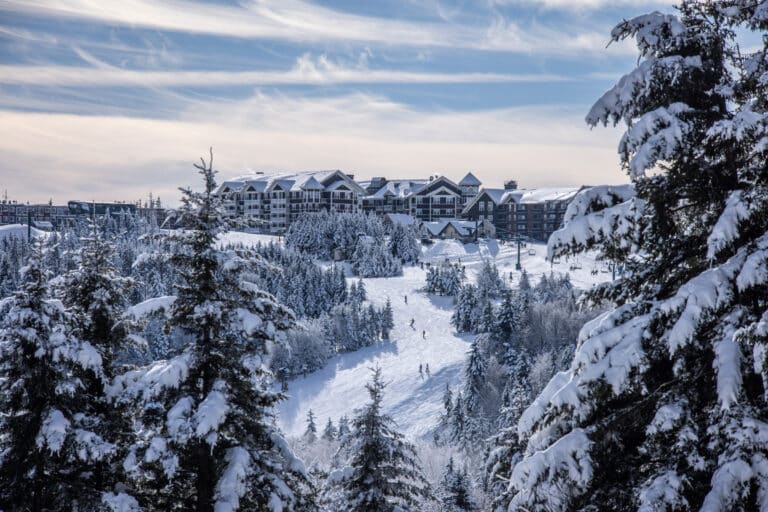There’s Actually Much to Explore in This Overlooked Stretch of the South Carolina Low Country
THE FIRST TIME I REALIZED THAT FRANCIS MARION National Forest existed, my wife and I were doing what most travelers do in South Carolina’s Low Country: Driving 70 mph down Highway 17 through a box canyon of loblolly pines on our way between cities.
We were heading south to check out one of the oldest historic districts in the U.S., founded in 1670 by King Charles II. While the coastal region between Georgetown and Charleston was definitely scenic, with matchstick trees, cypress swamps, and blackwater rivers, we didn’t think about stopping along the way.
Fairly atypical for me, I barely registered the forest service signs for sites I would later visit regularly, like South Tibwin, Buck Hall Recreation Area, Awendaw Creek, I’on Swamp, and the Palmetto Trail. The reason for my inattention was that my wife and I had recently relocated to a college town near Myrtle Beach, and I wasn’t exactly thrilled with the move.

I grew up out west, and my interests lay mostly with rugged inland regions where I could paddle whitewater, mountain bike, and hike. Now we lived in a region called the Low Country? As far as I knew, outdoor adventurers never said things like:
“The area is rad flat, bro.”
“Killer lack of topo lines.”
“Would make pancakes brag.”
Truth is, I didn’t give the area much of a chance during that first year or so. But an adventurous bike-rafting trip to Cumberland Island snapped me out of my complacency. What else had I missed in the region? The first place I decided to look were those intriguing signs along Highway 17.
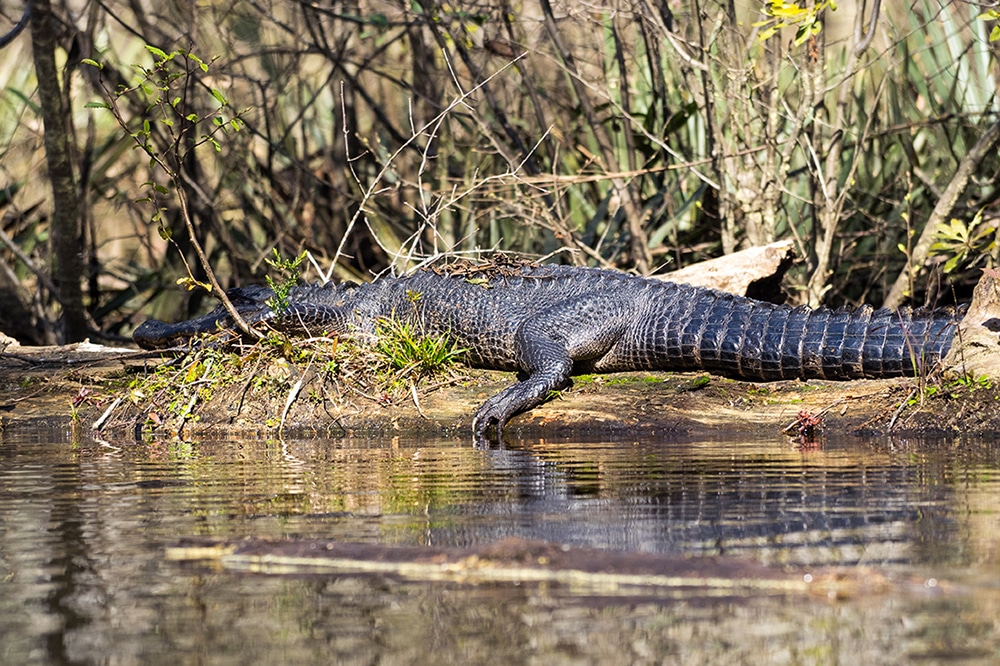
I soon homed in on mountain biking the entire Swamp Fox Passage, a 47-mile section of the cross-state Palmetto Trail named for Revolutionary War hero Francis Marion. While information was somewhat limited, the more research I did, the more highlights I came across worth a closer look.
That’s how, on a cold Saturday morning in early February, I parked outside a nondescript gate at North Tibwin. Despite the gate being ominously chained shut, a faint footpath passed around a brick wall. I warily followed a gravel doubletrack for about a quarter mile until I came across an even more eerie site. Decaying from years of neglect, a 19th-century plantation home that might have collapsed if not propped up by angled support beams.
Adding to the general spookiness, a turkey vulture was warming itself atop the chimney with its wings spread. Though I didn’t notice it right away, perched in a nearby tree was a barred owl. It watched me with a slightly judgmental look, as if wondering, how did you even find this place? I spent an hour exploring the abandoned house and surrounding grounds.
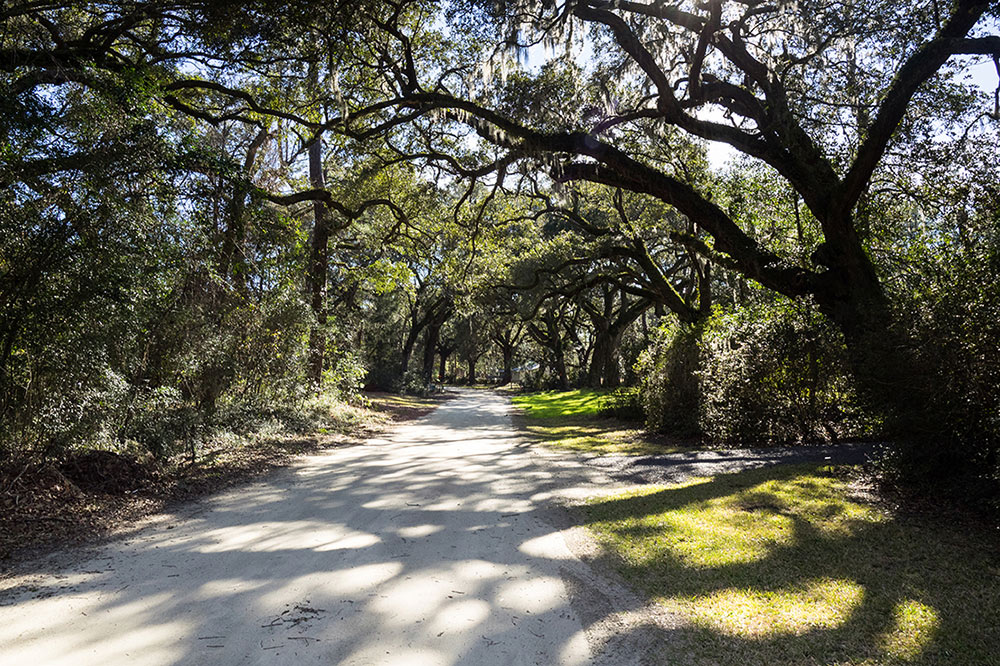
Over the next few days, between long rides on the Swamp Fox Passage with my fat bike, I continued to explore. Everywhere I went had that similar forgotten feeling, not so much a ghost town but more like a ghost forest. An abandoned church at Halfway Creek, the only remnant of a small community once nestled in the pines. A boardwalk broken into pieces by recent hurricanes at the Sewee Shell Ring, an oyster shell midden created on a tidal creek thousands of years ago by ancient Native Americans. (Note: the boardwalk was rebuilt in the spring.) The one youthful exception was the slender trees, with most under 30 years old, given the forest was almost destroyed by Hurricane Hugo in 1989.
Other sites did show signs of occasional use, including some more trodden paths. There were a few other people at the I’on Swamp Trail, a two-mile loop through wetlands originally built for flood irrigation to grow Carolina Gold rice during the slavery era. At the South Tibwin hiking area there were about five miles of old plantation roads, used by occasional hikers and mountain bikers, running through restored tidal wetlands.
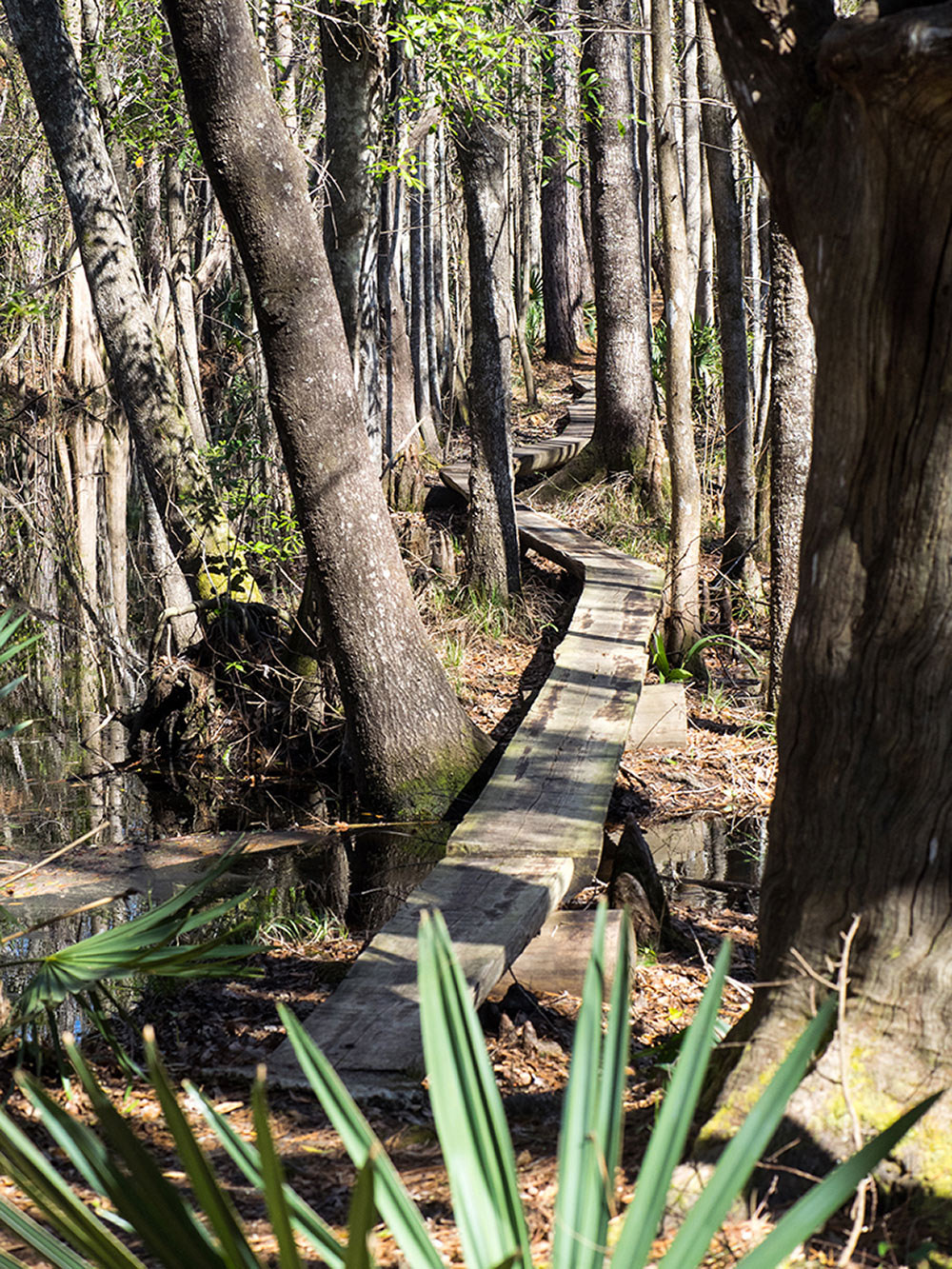
Perhaps the most historic highlight I saw during that first trip was the Old Georgetown Road. Running from near Buck Hall Recreation Area to near Hampton Plantation State Historic Site, these 13 miles—seven of which remain unpaved—are part of one of the oldest roads in America. The portion through Francis Marion National Forest is the southern continuation of a colonial road network that included the King’s Highway, stretching about 1,300 miles from Charleston to Boston. George Washington traveled Old Georgetown Road during his 1791 tour of the southern states. As I drove beneath twisty live oaks, I passed an old stone milepost that may have helped guide the first U.S. president’s carriage along its way.
After those first trips, the question was what to do next? Later that February, my wife and I brought a kayak and paddleboard to explore the area by water. Our first paddling foray was on tidal Awendaw Creek, riding the falling tide from the canoe launch to Buck Hall, paddling along the Intracoastal Waterway with dolphins and riding the rising tide back to our vehicle. Though we saw a few people hiking the Awendaw Passage trail above the creek, we were the only paddlers in sight.
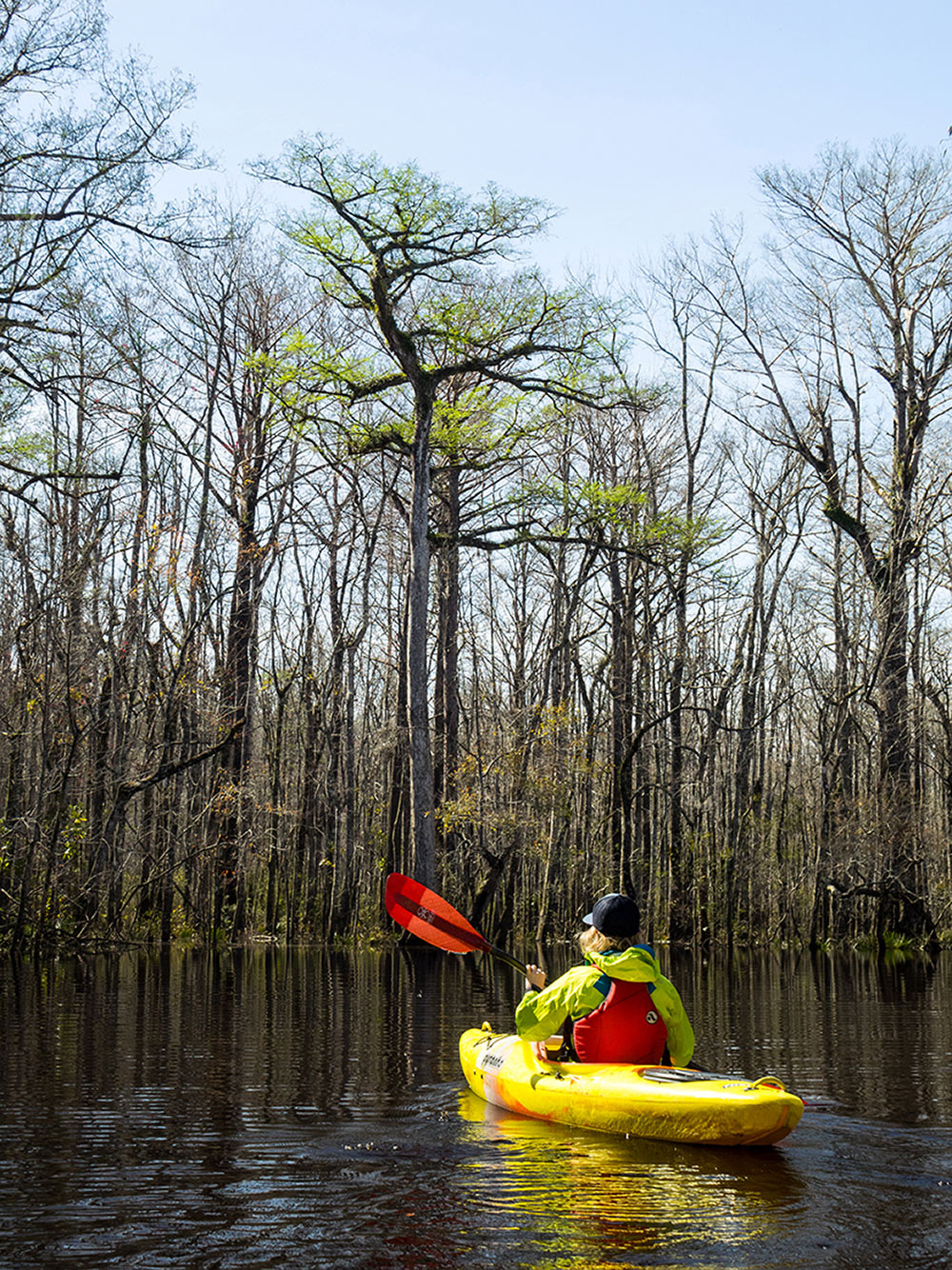
In early March, we went farther into the forest to kayak the Wambaw Creek Wilderness Canoe Trail. Translucent green saw palmettos grew at water level. Massive cypress trees loomed overhead, some of which were just starting to glow lime-green from the needle-like leaves that bud in early spring. Paddling around a bend, there was a downed tree blocking the channel and a lazy gator sunning on a log. It never even blinked, let alone moved. So, we backpaddled silently away and called that our turnaround point. Afterward, we visited Hampton Plantation State Park, taking a guided tour of the mansion and slave quarters before walking through preserved rice fields.
We finished the day with a half-mile hike out to Battery Warren, a Civil War fort on the southern bank of the Santee River. Between earthen mounds, Confederate troops in the 1860s mounted cannons here to protect the railroad crossing at Jamestown, 10 miles upstream. The fort never saw battle, and today there’s a small interpretative site and yet another little-used canoe trail passing by, which starts on Echaw Creek and finishes at the next landing below the fort.
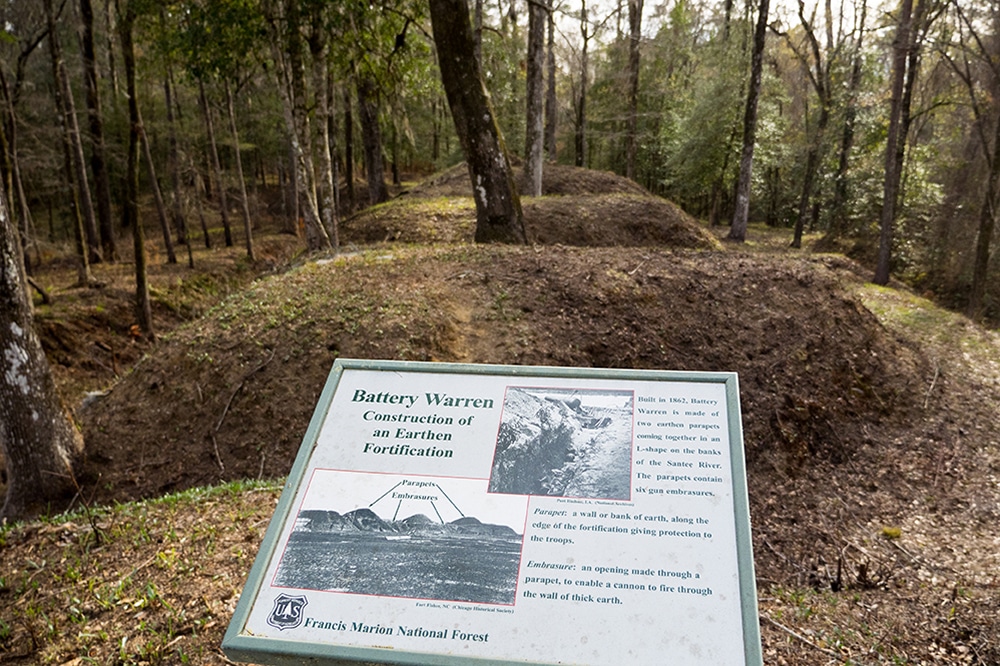
These days, we continue to visit the area, but only from fall through spring when the weather and bugs are milder. We’ve visited the Sewee Visitor Center and seen a pair of red wolves. We’ve taken a boat trip out to hike the undeveloped Bulls Island in adjacent Cape Romaine National Wildlife Refuge. And we’ve returned several times to Awendaw Creek for paddling or hiking on the trail. Since the pandemic, more people have remembered the Francis Marion area exists. But it’s never crowded when compared to well-known upcountry forests like Pisgah or those in the Smokies.
A few hundred square miles of mostly forgotten forest, deep in the heart of the Low Country.
